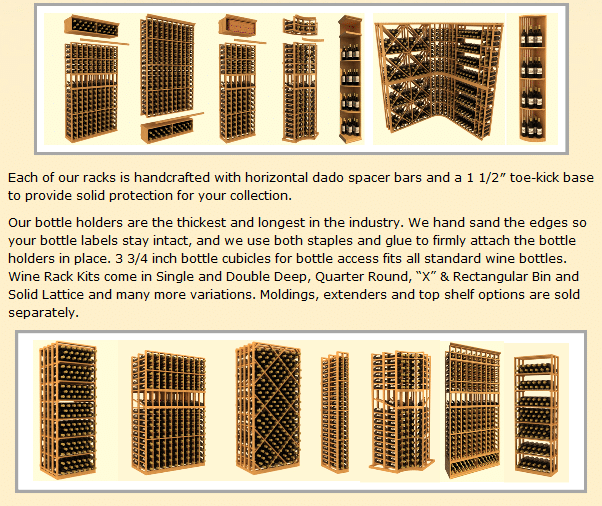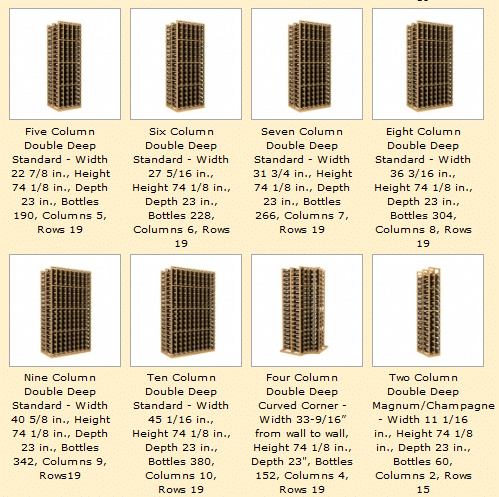Proper storage is crucial to maintaining and preserving the quality of wines. Wines have the ability to improve their taste and flavor when stored under excellent conditions. However, they can deteriorate just as easily if exposed to unfavorable environmental factors, such as excessive light, temperature, humidity, odor, and vibration.
Regardless of whether your wines are stored in a cellar, placed in a wine rack in a corner, or stacked neatly in a closet, following a few basic wine storage rules will help ensure that the taste and flavor of your collection will remain something for you to enjoy for a long period of time.
Wines need to be stored in dark places. They should be kept away from harmful light sources, such as fluorescent light and ultraviolet rays. Exposure to incandescent light can adversely affect the chemical compounds in wines and lead to premature development.
In choosing a lighting system for your storage space, LED light bulbs are a good option. LED-based lighting is energy efficient and emits less heat. Installing light timers and dimmer switches can help reduce the amount of light that your wines are exposed to on a daily basis as well.
Regulating temperature and humidity levels is essential to maintaining wine quality. The ideal storage temperature is between 50 to 60 degrees Fahrenheit. Fluctuating temperatures can accelerate the aging process and irreversibly damage wine. As to humidity level, keeping it within 60% to 75% should be enough to prevent the cork from drying out and restrict potential mold growth.
If the storage space is designed to be a climate-controlled environment, the size and configuration of the cooling system should be considered during the wine cellar design phase of the project. A proper wine cellar cooling system will efficiently provide a stable wine storage environment.
During wine cellar construction, it is important to outfit your storage space with proper insulation and vapor barriers. Insulation will help maintain the desired temperature, while vapor barriers will help contain condensation build-up. These features provide better moisture control for your wine room and ensure that the cooling system will function to its full potential.
Although wine bottles can be stored either vertically or horizontally, it is recommended to store them on their sides to keep the cork in constant contact with the wine. This prevents it from drying out, which can cause oxidation and spoil the wine. Wine racks are built to hold wine bottles the right way. They are designed with a tilt that allows wine bottles to be stored at an angle.
Keep your wine bottles away from food or household items that give off pungent odors. Unsavory smells can seep in through the cork and taint the wine. Wherever you choose to keep your wine bottles, make sure that the storage space has proper ventilation, which helps improve the air quality in your wine room.
Vibration can also have a negative influence on the chemistry of wine. It has been said that vibration can be a contributing factor in the premature aging of wines. Avoid storing wines near machinery that produce vibratory motion. For wines to mature nicely, they require not only a stable environment but also a quiet atmosphere.
Therefore, it is important that you choose a wine cellar construction company that can help you come up with a wine cellar design that will safeguard your precious wines. You can visit these web pages to get started:
http://www.winecellarspec.com/
http://www.winecellarspec.com/wine-cellars/
http://www.winecellarspec.com/wine-cellars/#gallery











